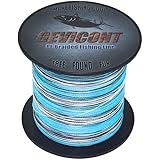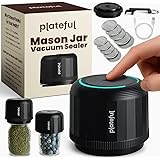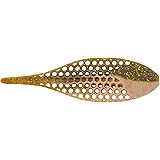Unearthing Your Oasis: A Comprehensive Guide to Building a Mini Underground Swimming Pool
Building a mini underground swimming pool is an achievable dream for many homeowners, especially those with limited space or a desire for a private, compact aquatic retreat. The video above visually demonstrates the intricate steps involved in such a construction project, inspiring countless DIY enthusiasts. This guide will delve deeper into the process, providing detailed insights and practical advice to complement the visual journey, helping you plan and execute your own project successfully.Creating your own mini underground swimming pool can transform your backyard into a personal haven. These compact pools, often referred to as plunge pools or cocktail pools, offer significant benefits, including lower construction costs and reduced maintenance compared to their full-sized counterparts. For instance, many homeowners report cost savings of 30-50% on initial outlay when opting for a mini pool.
This type of project, while rewarding, requires careful planning and execution. It’s a journey that combines practical skills with a vision for relaxation and enjoyment. Understanding each phase, from initial design to final touches, is crucial for a durable and aesthetically pleasing result.
1. Strategic Planning and Design for Your Mini Underground Swimming Pool
The foundation of any successful construction project, particularly a mini underground swimming pool, lies in thorough planning and design. This initial phase dictates the project’s scope, budget, and ultimate success. Careful consideration here prevents costly mistakes down the line and ensures your pool perfectly fits your lifestyle and space.
Site Selection and Layout
Choosing the right location for your mini pool is paramount. Factors like sun exposure, proximity to utilities (water, electricity), and accessibility for excavation equipment must be evaluated. Consider how the pool will integrate with your existing landscaping and outdoor living areas. A well-chosen site can enhance both the pool’s usability and the overall appeal of your backyard.
For example, positioning your pool to receive maximum afternoon sun can help naturally warm the water, potentially reducing heating costs. Similarly, locating it away from large trees minimizes leaf debris and root interference. The compact nature of a mini pool, typically ranging from 8×12 feet to 10×15 feet, offers flexibility for smaller yards, where a traditional pool simply wouldn’t fit.
Permits and Regulations
Before any digging begins, it’s crucial to understand and obtain all necessary permits. Building codes vary significantly by municipality, and failing to secure proper authorization can lead to hefty fines or forced demolition. Research local zoning laws, setback requirements, and safety regulations, especially concerning fencing and electrical installations.
On average, securing pool permits can take anywhere from a few weeks to several months, depending on your local planning department’s efficiency. Consulting with a local contractor or permit specialist can streamline this process and ensure compliance. Understanding these regulations is not just about avoiding legal issues; it’s about ensuring the safety and structural integrity of your mini underground swimming pool.
Material Choices and Specifications
The materials you select for your mini underground swimming pool will influence its durability, appearance, and long-term maintenance. Common options for the pool shell include concrete (gunite/shotcrete), fiberglass, and vinyl liner. Concrete offers maximum customization in shape and size, while fiberglass pools are quicker to install and have a smooth, non-porous surface that resists algae.
For instance, concrete pools, while more labor-intensive initially, boast a lifespan of 50 years or more with proper care. Fiberglass pools, on the other hand, often come with a 25-30 year warranty and can be installed in a matter of days once the excavation is complete. Each material has distinct advantages and disadvantages concerning cost, installation time, and required upkeep. Evaluate these options based on your budget, aesthetic preferences, and desired longevity.
2. The Excavation and Foundation Phase
With a solid plan in place, the physical work begins with excavation. This stage is critical, as it creates the precise void for your mini underground swimming pool and establishes the stable base upon which it will rest. Accuracy here is vital for structural integrity.
Digging the Pit
Excavation involves carefully digging out the earth to the exact dimensions of your planned pool, plus an additional working space around the perimeter. Professional excavation equipment, such as a mini excavator or backhoe, is typically required for efficiency and precision. A typical excavation for a mini pool might involve removing 15-20 cubic yards of soil, which needs to be either hauled away or repurposed on-site.
It’s important to account for soil type and potential groundwater. Sandy soil may require shoring to prevent collapse, while rocky terrain will increase excavation time and cost. Always mark utility lines clearly before digging to avoid dangerous and expensive accidents. Many homeowners find hiring experienced operators for this phase to be a wise investment, reducing risks and ensuring accurate dimensions.
Base Preparation
Once the main pit is dug, the base of the pool needs meticulous preparation. This involves leveling the earth and compacting it to create a stable foundation. A layer of crushed gravel or aggregate is often spread across the base and compacted further, providing drainage and preventing future settlement.
For concrete pools, a specific rebar grid will be laid out before the concrete is poured. For fiberglass or vinyl liner pools, a precise, level pad of sand or vermiculite mix is typically installed to support the pool shell. This careful preparation prevents cracking, shifting, and other structural issues that could compromise your mini underground swimming pool over time.
3. Building the Structure and Ensuring Waterproofing
The structural phase brings your mini underground swimming pool to life, forming its walls and floor. Following this, waterproofing is applied, sealing the structure against leaks and ensuring its longevity. These steps are foundational to the pool’s function.
Wall Construction and Reinforcement
Depending on your chosen material, this phase will vary. For concrete pools, a network of steel rebar is erected, forming the shape of the pool walls. Shotcrete or gunite is then sprayed onto this framework, creating a monolithic, incredibly strong structure. This process allows for custom shapes and depths, offering maximum design flexibility.
Fiberglass pools, conversely, arrive as a pre-formed shell. This shell is carefully lowered into the excavated pit and precisely leveled. Backfilling with gravel or sand around the shell provides crucial support. Vinyl liner pools utilize a panel system (typically steel or polymer) to form the walls, which are then braced and backfilled. Each method provides a robust structure for your mini underground swimming pool.
Liner or Coating Application
Waterproofing is essential to prevent water loss and protect the pool’s structural components from moisture damage. For concrete pools, various finishes like plaster, pebble-tec, or tiles are applied after curing, which also serve as the primary waterproofing layer. These finishes can last 7-15 years before requiring replastering, depending on water chemistry and usage.
Vinyl liner pools rely on a heavy-duty vinyl membrane that is custom-fit to the pool’s interior. This liner acts as the sole barrier against water leakage. Fiberglass pools are inherently waterproof due to their gel-coat finish, requiring no additional waterproofing. Selecting the right waterproofing system is critical for the long-term integrity and enjoyment of your mini underground swimming pool.
4. Integrating Plumbing and Filtration Systems
The heart of any functional swimming pool lies in its plumbing and filtration systems. These components work in tandem to circulate water, remove impurities, and maintain water quality. A properly designed system ensures clear, healthy water for swimming.
System Design and Pipe Laying
The plumbing system for your mini underground swimming pool includes lines for circulation, filtration, skimmers, main drains, and return jets. Proper sizing and layout of these pipes are crucial for efficient water flow and filtration. PVC piping is commonly used due to its durability and resistance to chemicals.
Typical mini pools might require 100-200 feet of plumbing lines, meticulously laid out to minimize friction and ensure strong flow. It’s essential to trench and bury these lines securely, often beneath the pool deck, connecting them to the central equipment pad. An effective plumbing design minimizes pump strain and maximizes the system’s ability to clean the water.
Filtration and Pump Installation
The filtration system, comprising a pump and a filter, is responsible for keeping your mini underground swimming pool water clean. The pump draws water from the pool through the skimmer and main drain, pushes it through the filter, and then returns clean water via the return jets. Filter types include sand, cartridge, and diatomaceous earth (DE), each with varying levels of filtration efficiency and maintenance requirements.
For example, a sand filter might capture particles down to 20-40 microns, while a DE filter can capture particles as small as 1-3 microns. Selecting an appropriately sized pump and filter based on your pool’s volume and expected usage is vital. Energy-efficient variable-speed pumps, while a higher initial investment, can save significant operating costs over the lifespan of your mini underground swimming pool, often recouping their cost within 1-3 years.
5. Finishing Touches and Landscaping
Once the core structure, plumbing, and filtration are in place, the focus shifts to the aesthetic and safety elements. Finishing touches elevate your mini underground swimming pool from a construction project to a beautiful, inviting retreat.
Coping and Decking
Coping is the material that caps the edge of the pool, providing a finished look and a safe edge for swimmers. Options range from natural stone (like travertine or flagstone) to concrete pavers or poured concrete. Decking extends from the coping, creating a surround for lounging and accessing the pool.
Popular decking materials include concrete, wood, composite, and pavers, each offering different aesthetics and maintenance needs. A well-designed deck not only enhances the pool’s appearance but also provides crucial non-slip surfaces for safety. This phase allows for significant personalization, enabling you to match your mini underground swimming pool to your home’s architectural style and your personal taste.
Safety Features and Landscaping Integration
Safety should always be a top priority for any swimming pool. This includes installing compliant fencing, safety covers, and alarms where required by local regulations. Features like non-slip surfaces, adequate lighting for night swimming, and emergency shut-offs contribute to a safer environment. Many municipalities require a self-closing, self-latching gate on any pool fence, preventing unsupervised access.
Beyond safety, integrating your mini pool with surrounding landscaping ties the entire backyard together. This might involve planting suitable vegetation, installing outdoor lighting, or adding water features and seating areas.Thoughtful landscaping can enhance the sense of an oasis, turning your backyard into a truly enchanting space around your new mini underground swimming pool.
6. Maintenance and Long-Term Enjoyment
The work doesn’t end when your mini underground swimming pool is complete. Regular maintenance is key to preserving its beauty, ensuring water quality, and extending its lifespan. Consistent care will allow you to enjoy your investment for many years.
Routine Pool Care
Regular maintenance for a mini pool involves testing water chemistry (pH, chlorine, alkalinity), cleaning the filter, and skimming debris. For example, maintaining a pH level between 7.4 and 7.6 is crucial for swimmer comfort and sanitizer effectiveness. Weekly testing and chemical adjustments are typically sufficient for most mini pools.
Brushing the pool walls and vacuuming the floor help prevent algae growth and keep surfaces clean. While mini pools require less chemical volume and less time to clean than full-sized pools, consistency is still vital. Many pool owners dedicate 30-60 minutes per week to routine maintenance tasks, ensuring sparkling clean water.
Long-Term Preservation Tips
Beyond daily and weekly tasks, your mini underground swimming pool will benefit from annual professional inspections. This includes checking plumbing for leaks, assessing equipment for wear, and ensuring all safety features are functioning correctly. Winterizing your pool in colder climates, or conducting a thorough cleaning and equipment check in warmer regions, prepares it for seasonal changes.
Proactive maintenance, such as addressing minor repairs promptly, can prevent them from escalating into major issues. Investing in a good quality pool cover can also significantly reduce debris, chemical evaporation, and heat loss, contributing to a more efficient and lower-maintenance mini underground swimming pool. With proper care, your compact aquatic retreat will provide endless enjoyment and enhance your outdoor living experience for decades to come.











